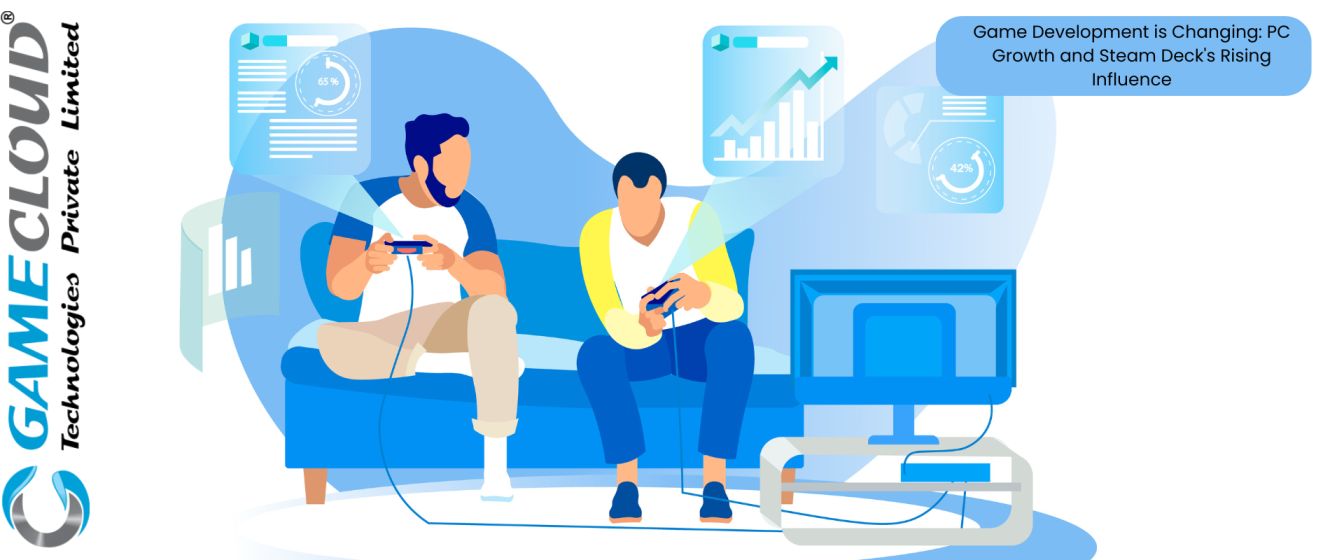
The gaming industry is shifting, and developers are adjusting to new trends. A recent Game Developers Conference survey reveals a strong increase in PC game development. At the same time, Valve’s Steam Deck is attracting attention, bringing fresh possibilities to game creators. For years, studios have worked across multiple platforms—consoles, PC, and mobile. But today, the numbers point in a clear direction. PC gaming is taking priority, while handheld gaming is evolving beyond its traditional limits.
PC Development Gains Momentum
PC gaming has always had a strong presence, but the latest GDC survey highlights a sharp increase in developer interest. Around 80% of game creators are focusing on PC projects, a jump from 66% just a year ago. This shift suggests a growing preference for the platform over consoles. One key reason is flexibility. PC hardware varies widely, allowing developers to create games that scale across different setups. High-end players expect cutting-edge performance, while casual gamers prefer smooth gameplay on budget-friendly machines. This range makes PC development appealing compared to consoles, which have fixed specifications. The open nature of the PC ecosystem is another factor. Unlike consoles, which require approval from manufacturers, PCs allow developers to release games freely through platforms like Steam, Epic Games Store, and GOG. This freedom gives developers more control over distribution, pricing, and updates.
PC gaming also benefits from an engaged audience. Digital storefronts and community-driven modding extend the life of games. Instead of being tied to a strict release cycle, developers can update, expand, and refine their titles over time.
Steam Deck’s Growing Appeal
While PC gaming is expanding, handheld gaming is also changing. Valve’s Steam Deck is gaining traction, offering a portable experience without sacrificing game performance.
Even though the Steam Deck wasn’t explicitly listed as a primary development platform in the GDC survey, many developers expressed interest in it. Unlike traditional handheld consoles that require unique game versions, the Steam Deck runs PC games directly. This removes the need for separate development, making it easier for studios to support the platform.
The device’s ability to bring full-scale PC gaming to a portable format is significant. Players are no longer limited to gaming at a desk or on a high-end laptop. With the Steam Deck, they can take their library anywhere. Developers are taking note, as this trend opens new possibilities for player engagement.
This shift also encourages game creators to rethink optimization. While the Steam Deck is powerful, it doesn’t match high-end gaming rigs. Studios that fine-tune their games for smooth performance across different PC setups—including handheld devices—will have an advantage.
New Possibilities and Challenges
The growth of PC gaming and the rise of the Steam Deck create both opportunities and challenges for developers. The ability to reach a wider audience is a major benefit. PC players span various demographics, from competitive gamers to casual users who enjoy indie titles. The Steam Deck further expands this reach by making those same games accessible on the go.
However, adapting games for both desktop and handheld play presents challenges. Developers must adjust interfaces, controls, and performance settings to suit different screens and input methods. A game designed for a large monitor and mouse controls won’t always translate well to a handheld device with thumbsticks and a smaller screen. Performance tuning is another key factor. The Steam Deck’s hardware is strong for a portable device, but it isn’t on par with high-end gaming PCs. Developers must carefully balance frame rates, resolution, and battery life to deliver a smooth experience.
Market competition is also increasing. As more studios shift to PC, standing out becomes harder. Developers must focus on fresh gameplay ideas, strong narratives, or unique visual styles to capture player interest.
Innovative Gaming Experiences by LolzSoft
At LolzSoft, we are passionate about crafting innovative and immersive gaming experiences. As a division of GameCloud Technologies, we specialize in rapid game prototyping and modular development, ensuring high-quality and engaging gameplay. Our mission is to create games that entertain, educate, and inspire players worldwide. With a dedicated team of developers, designers, and storytellers, we strive to push the boundaries of interactive entertainment, delivering games that leave a lasting impact on our audience.
The Future of Game Development
The way games are made is evolving, and this shift toward PC and handheld gaming is unlikely to slow down. More developers are choosing PC as their main platform, and devices like the Steam Deck are creating new possibilities. Studios that adapt to this shift will be in a strong position. Those who optimize their games for multiple playstyles, embrace flexible development, and focus on accessibility will have an advantage.
It’s an exciting time for game creators. The lines between PC and handheld gaming are blurring, and the developers who recognize this change early will be best prepared for the future.
For Know More Contact-Now
FAQs: Game Development is Changing: PC Growth and Steam Deck’s Rising Influence
Why are more developers choosing PC as their main platform?
PC gaming offers greater flexibility, higher performance capabilities, and a vast player base. Unlike consoles, PCs allow developers to push graphical limits, support mods, and release updates more frequently.
How is handheld gaming influencing game development?
Devices like the Steam Deck and ASUS ROG Ally are bridging the gap between handheld and PC gaming. Developers now focus on optimizing games for different screen sizes, control schemes, and performance levels to ensure a seamless experience across devices.
What challenges do developers face when optimizing for both PC and handheld gaming?
Ensuring smooth performance across different hardware configurations, adapting UI elements for smaller screens, and optimizing battery life for handheld devices are key challenges. Developers need to balance performance and accessibility without compromising gameplay quality.
How does this shift benefit players?
Players get more choices in how and where they play their favorite games. With cross-platform compatibility and improved optimization, they can enjoy high-quality gaming experiences whether on a desktop, laptop, or handheld device.
